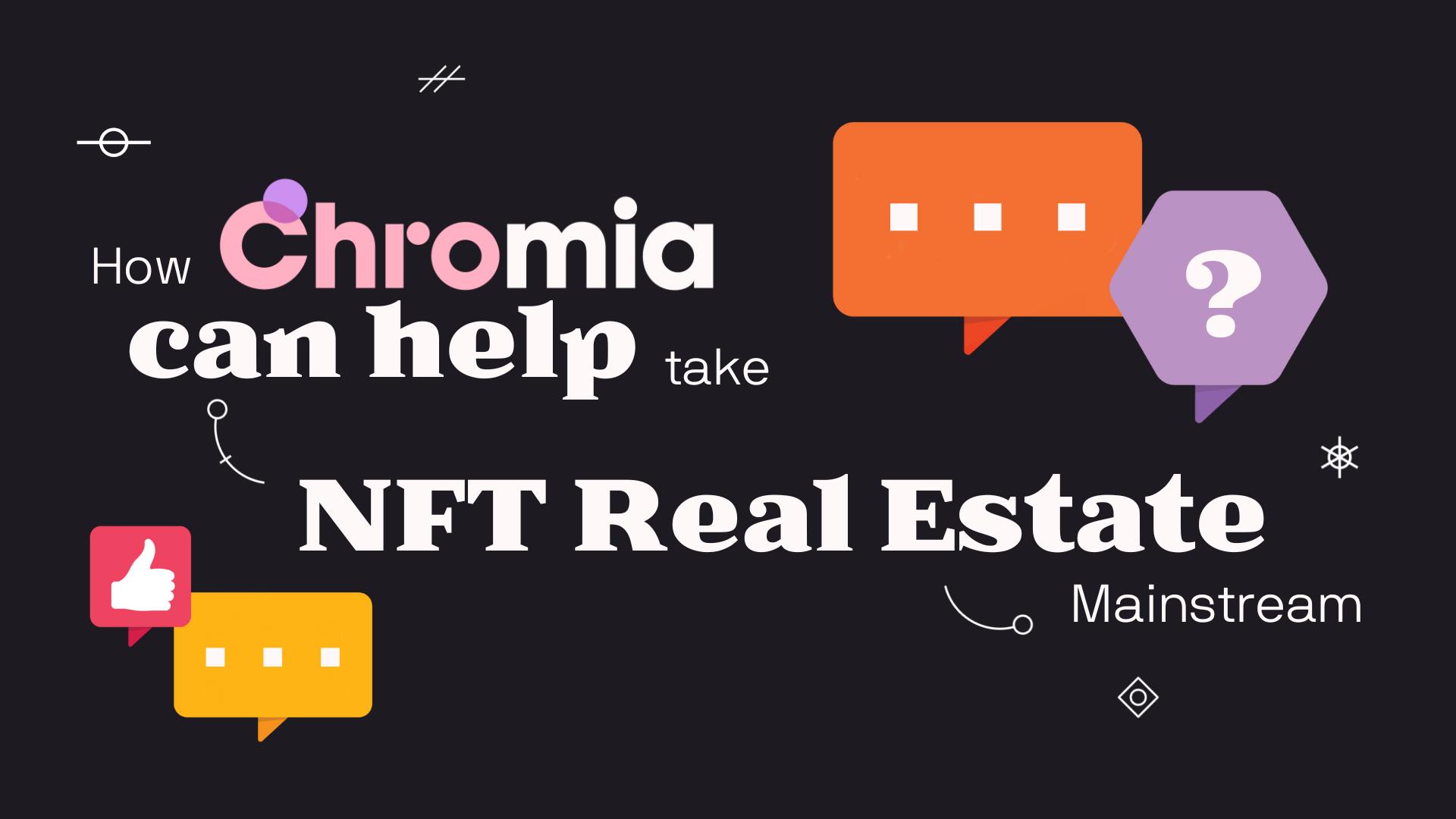In the most recent issue of FIBREE’s Real Estate Industry Report, ChromaWay’s Todd Miller wrote a long form article discussing the current and future applications of NFTs and blockchain in the world of both virtual and physical real estate.
Inside the article, entitled “For Sale: Is the Future of Real Estate in the Metaverse?”, Todd mentions Chromia and the Originals NFT Protocol as a solution to several of the scalability problems currently facing real estate NFT applications. Below, we will take some time to briefly discuss the features that will enable our platform to be a functional solution for everyday real estate transactions.
More Efficient Data Management via Relational Blockchain
Most blockchain are very inefficient at storing and manipulating data. If you have ever been to a land registration office, you may have seen endless rows of filing cabinets that contain all the necessary land deeds and their related information. When you are recreating this in a blockchain environment, it is critical to use a system that can be easily accessed, searched, and edited, without needing individual slow (and costly) transactions. By reading and writing data in the same fashion as a traditional computer database, Chromia makes data operations far more scalable and affordable.
Application Side TX Management
In order to build a system which can be accessed by stakeholders from several fields and of varying technical abilities, it is important to make blockchain interaction as streamlined as possible. In any current setup, every user on the network would need to acquire a platform’s native token in order to complete any transactions. By offering flexibility in the way fees operate, Chromia will allow application administrators to ‘pay the way’ for its end users, meaning they can interact with an application without holding CHR tokens.
On Chain Storage of File Data
Current NFTs hold only a small amount of text data which ‘points’ somewhere else, typically to an IPFS address. Our Originals protocol will be able to store metadata and images directly on our blockchain, making the tokens far more ‘self-contained’ than current NFTs. In the context of real estate, it may be possible in the future to embed images of a property itself into a token that represents its ownership.
Stronger Legal Claims via Ricardian Contracts
Earlier this year, we shared an article about our work to integrate Ricardian Contracts into the Originals NFT Standard. WIthout getting too in depth on the details, this feature will allow our NFTs to encode important contractual data between the buyers and sellers of tokens directly on the blockchain. This removes the reliance on external guarantees or legal disclaimers existing separately from the tokens themselves. This feature is very useful in the context of real estate agreements, as the act of sending or receiving the token itself could serve as an acceptance of terms written therein.
Is the Future of Real Estate in the Metaverse?
While the application of blockchain in the world of both virtual and physical real estate is still in its infancy, it is clear by the level of interest and adoption across both industries that the idea carries massive potential to change the way transactions are carried out and recorded. While it is only one possible application of our platform, we believe that Chromia’s unique features will make it a strong candidate to further advance the adoption of blockchain based solutions.
About Chromia
Modern society runs on data and every online service you’re using is built upon underlying databases - ranging from your online bank to music streaming and gaming. Chromia is a relational blockchain - a combination of a relational database and a blockchain - making it easy to develop user-friendly decentralized apps for almost any industry, including DeFi, NFTs, gaming, and more.
Website | Twitter | Telegram | Facebook | Instagram | Youtube

